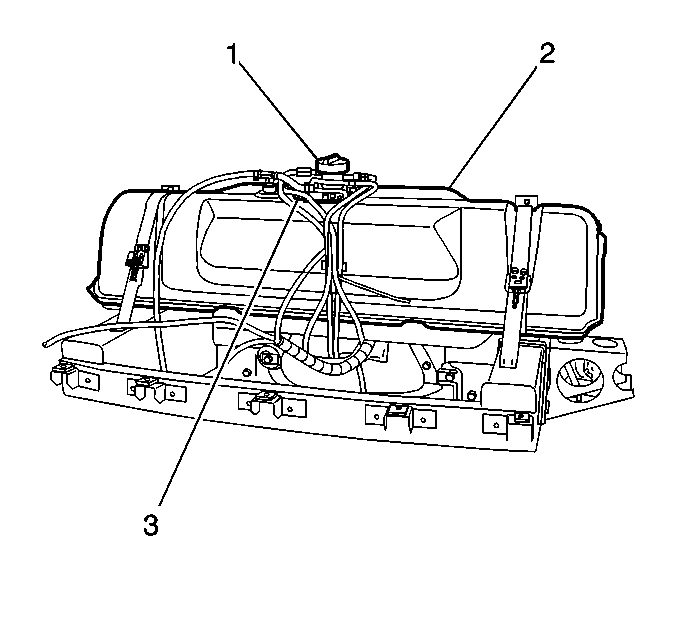For 1990-2009 cars only
Caution: In order to prevent injury, perform the following items:
• Before attempting the Fuel Tank Leak Check, place a dry chemical
(Class B) fire extinguisher near work area. • Before removing the fuel tank for a suspected leak, make sure
the fuel pipes are not leaking onto the fuel tank. Once the fuel tank is removed,
make sure fuel is not leaking around the fuel sender assembly seal. • This check requires a fuel sender assembly and an seal to be
installed in the fuel tank.
- Relieve the fuel system pressure. Refer to the Fuel Pressure Relief .
- Drain the fuel tank. Refer to Fuel Tank Draining .
- Remove the fuel tank. Refer to Fuel Tank Replacement .
- Cap the fuel feed pipe, the fuel return pipe, and the evaporative emission (EVAP) pipe on the fuel sender assembly.
- Plug the fuel tank filler pipe opening.
- Connect a piece of hose to the fuel tank EVAP pipe.
- Submerge the fuel tank in water or apply a soap solution to the outside of the fuel tank.
- Apply 7 to 10 kPa (1 to 1.5 psi) air pressure to the piece of hose on the fuel tank EVAP pipe.
- Air bubbles appearing from the fuel tank indicate a leak. Replace the fuel tank if it is leaking. Refer to Fuel Tank Replacement .

